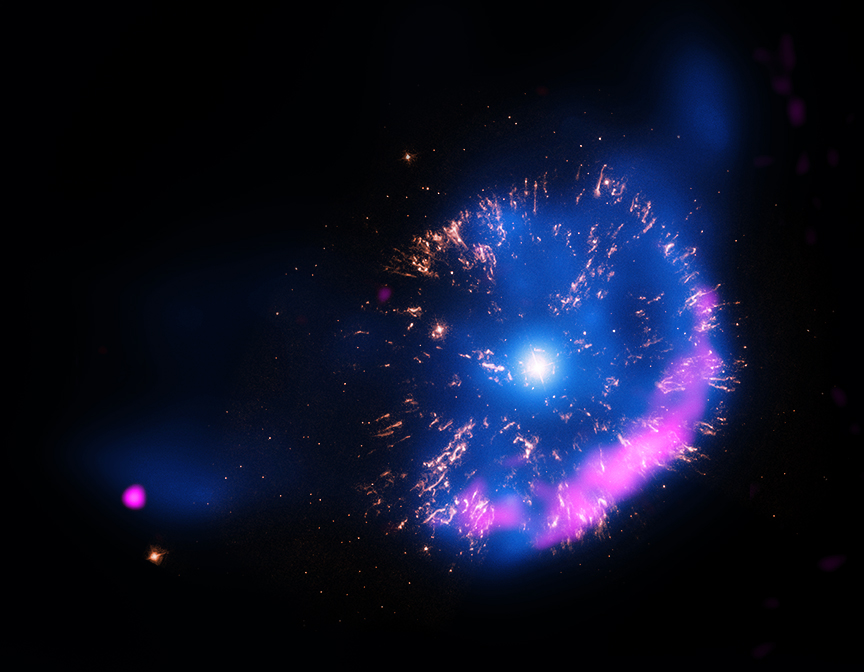
 Credit: X-ray: NASA/CXC/RIKEN/D.Takei et al; Optical: NASA/STScI; Radio: NRAO/VLA
Credit: X-ray: NASA/CXC/RIKEN/D.Takei et al; Optical: NASA/STScI; Radio: NRAO/VLA
Beyond the Wall of Space
Nova explosions occur in binary star systems in which a normal star is orbited by a white dwarf, the tiny burnt-out cinder left behind after a star like the sun runs out of nuclear fuel. White dwarfs contain an enormous amount of matter, about as much as our sun, in an object the size of the earth. The incredible density of a white dwarf produces an intense warp in spacetime, and hydrogen-rich material from the companion star can fall towards the white dwarf, accumulating on the white dwarf's surface. As more star matter accumulates on the white dwarf's surface, the surface temperature and density increases, until, at a temperature of tens of millions of degrees, the hydrogen may suddenly fuse into helium in a titanic thermonuclear explosion that blasts some of the outer layers of the white dwarf into space. One of the best examples of a modern nova explosion is the binary system GK Per, which was observed to explode in 1901. The explosion on GK Per caused it to flare into prominence, rising from visual obscurity to become the fifth brightest star in the night sky. GK Per offers astronomers the ability to study how the ejecta from a recent nova explosion interacts with and alters the space surrounding the star. The image above shows a recent X-ray image (in blue) obtained by the Chandra X-ray Observatory, compared to an optical (red) and radio image (purple). Comparing the X-ray observation with an earlier Chandra observation from 2000, astronomers can examine the details of how the exploded material, moving at nearly 700,000 miles an hour, collides with and breaks through walls of the interstellar medium. GK Per remains an active subject for astronomers to study.
Published: March 23, 2015
<
HEA Dictionary ● Archive
● Search HEAPOW
● Other Languages
● HEAPOW on Facebook
● Download all Images
● Education ● HEAD
>

Each week the HEASARC
brings you new, exciting and beautiful images from X-ray and Gamma ray
astronomy. Check back each week and be sure to check out the HEAPOW archive!
Last modified Tuesday, 27-Feb-2024 10:10:07 EST


